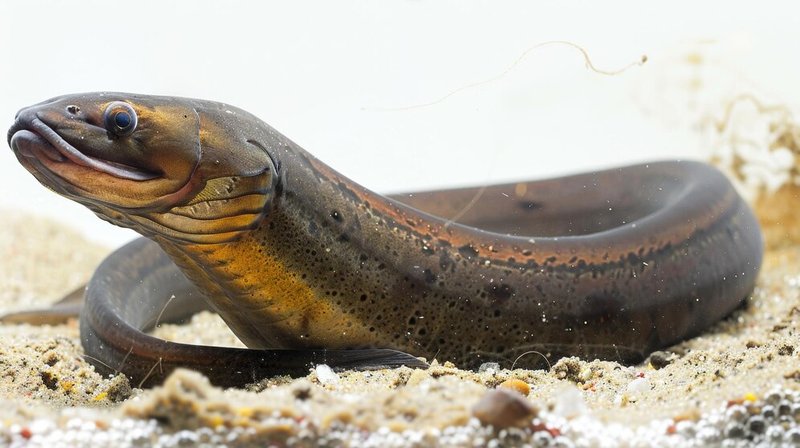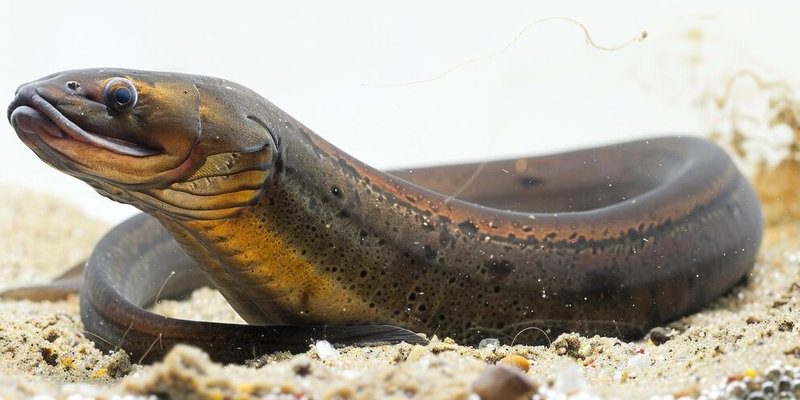
Vinegar eels are often associated with homemade vinegar and can be quite fascinating to observe. If you’re ever thinking about exploring ponds, gardens, or even your homemade fermentation projects, knowing how to identify these little guys can be a rewarding experience. Let’s dive into the world of vinegar eels and learn how to spot them in their natural habitat.
What Are Vinegar Eels?
Vinegar eels, scientifically known as *Turbatrix aceti*, are tiny, free-living nematodes. Ranging from about 1 to 3 millimeters long, they might not seem noticeable at first glance but are quite active swimmers. You might think of them as the partygoers of the microbial world; always moving, always exploring!
One thing that sets vinegar eels apart is their habitat. They thrive in environments where vinegar is present, often living in unfiltered apple cider vinegar or any liquid that has undergone fermentation. These eels feed on bacteria and yeast, which are plentiful in these environments. So, if you’ve ever noticed a cloudy jar of vinegar, there’s a good chance those wiggly creatures are getting their groove on!
Vinegar eels are harmless and actually play a beneficial role in the fermentation process. They help break down organic matter, making them valuable to home brewers and fermenters. So, if you’re thinking about starting a fermentation project, don’t be surprised if you find these little guys hanging out!
Where to Find Vinegar Eels
Vinegar eels are typically found in places where fermentation happens. This includes homemade vinegar, compost bins, and even on the soil of potted plants. They love moisture and can be found in damp environments where organic matter decomposes.
If you want to spot them, consider looking in:
- Fermentation Jars: Check any jar where vinegar is made, especially if it’s unfiltered.
- Compost Bins: Amidst the breakdown of food scraps, you’re likely to find vinegar eels.
- Garden Soil: Moist and rich soil can also be a home for these tiny creatures.
When exploring these areas, it helps to know some specific signs. If you see a slightly cloudy liquid with a lot of movement, those might just be vinegar eels swimming around. Just remember, they prefer warm environments, so summer may be the best time to look for them.
Identifying Vinegar Eels
Identifying vinegar eels can be an exciting challenge! To do this, you’ll need a bit of patience and perhaps a magnifying glass or a microscope. Here’s what to look for:
1. Movement: Vinegar eels are very active. You’ll often see them swimming in a whip-like motion, which is a dead giveaway.
2. Size: These little guys are generally between 1 to 3 mm long, making them small but not invisible to the naked eye.
3. Body Shape: They have long, thin bodies, similar to a strand of spaghetti. This elongated shape helps them navigate through the liquid.
4. Color: While they are nearly transparent, you may notice them reflecting light, especially in a well-lit environment.
In your search, observe closely. You might see them darting around, almost like tiny water snakes. This dynamic movement makes identifying them more engaging—almost like watching a small ballet performance!
Using a Microscope to Spot Them
If you want to take your vinegar eel spotting to the next level, using a microscope is the way to go. Here’s how to do it step by step:
1. Collect a Sample: Using a dropper, collect a small sample from your chosen habitat (like vinegar or compost).
2. Prepare a Slide: Place a drop of the liquid on a microscope slide and cover it with a glass cover slip.
3. Start Observing: Place the slide under the microscope. Lower the magnification first, then gradually increase it to see more detail.
4. Look for Movement: Focus on areas where the liquid appears active. That’s where you’re most likely to spot the vinegar eels.
Using a microscope not only helps you identify these creatures but also opens up a whole new world of microscopic life. You might just find that it’s a captivating hobby!
Why Identifying Vinegar Eels Matters
You might be wondering why it’s important to identify vinegar eels. For starters, they can be a great indicator of a healthy fermentation process. If vinegar eels are present, it often means the environment is rich in nutrients and microorganisms that contribute to good fermentation.
Additionally, understanding the presence of vinegar eels can help you troubleshoot your fermentation projects. If you find them in unexpected places, it could mean that your fermentation process is being compromised or that there’s an imbalance in the microbial ecosystem.
Moreover, recognizing these creatures can spark curiosity about other microorganisms you might encounter in nature. By learning to identify vinegar eels, you’re also developing a deeper appreciation for the often-overlooked micro-world around us.
Common Misconceptions About Vinegar Eels
There are a few common misconceptions about vinegar eels that are worth addressing:
– They’re Harmful: Many people worry that vinegar eels can spoil their vinegar or cause health issues. The truth is, they are harmless to humans—unless you find their presence bothersome!
– They’re Related to Eels: It’s easy to think they must be similar to eels because of their name, but they’re actually nematodes. They don’t share any biological relation with true eels.
– They Only Live in Vinegar: While they thrive in vinegar, vinegar eels can also be found in other organic materials, like compost or soil.
Understanding these misconceptions is crucial, especially if you’re looking to explore fermentation or gardening. It can help you appreciate these tiny creatures rather than fear them.
Maintaining a Vinegar Eel Habitat
If you’re tempted to keep vinegar eels as a part of your DIY fermentation projects, it’s essential to know how to maintain their habitat properly. Here are some tips:
1. Keep It Clean: Regularly clean any containers you use for fermentation. This prevents unwanted bacteria that could harm the vinegar eels.
2. Monitor Temperature: Keep your fermentation area at a warm temperature, ideally between 65°F to 75°F (18°C to 24°C), to encourage healthy eel populations.
3. Feed Them: If you’re keeping vinegar as a habitat, add some organic matter like fruit scraps or grains to provide food for the eels.
By creating a suitable environment, you’ll not only support vinegar eels but also enhance the quality of your fermentation projects. They can act as little guardians of your homemade vinegar!
In conclusion, identifying vinegar eels in their natural habitat can be an enjoyable venture that opens up a whole new perspective on fermentation and the micro-world. Whether you’re just exploring or diving into the world of home fermentation, understanding these little critters can make all the difference. So grab a jar, a microscope, and go on the hunt for these fascinating creatures—you never know what you might discover!

